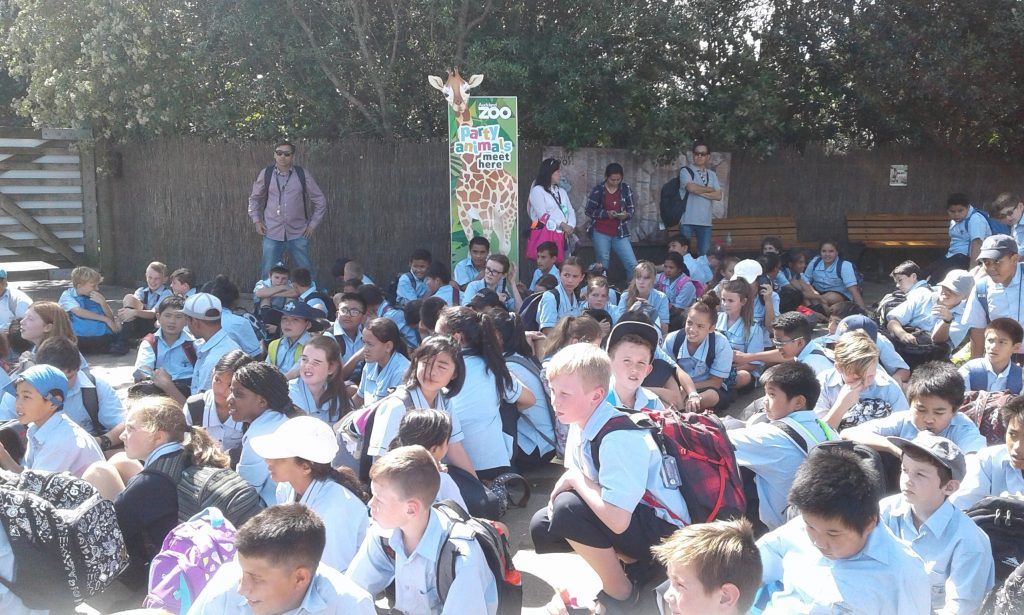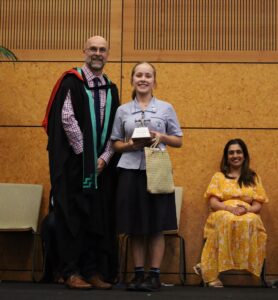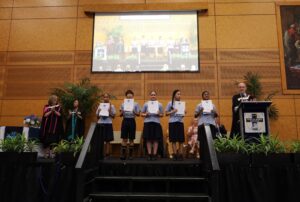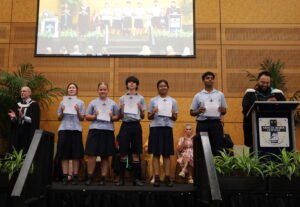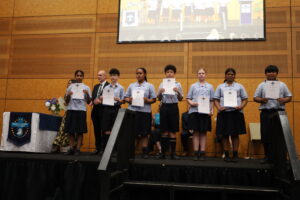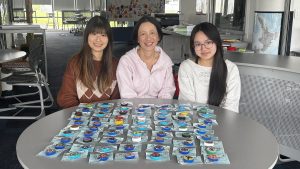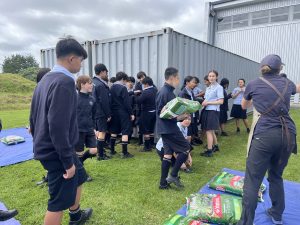In a happy mood we entered the courtyard. The intense heat and flies seemed happy to greet us and seemed to acknowledge that a new snack had arrived. A sign read that Auckland zoo has been running successfully for 96 years and was opened on 22 December, 1922 by the Governor General and the Admiral of the Navy. We passed through the Asia section and assembled by the Red Panda and Otter enclosures. A welcoming speech quickly sorted out the rules and what’s in our best interests when visiting an enclosure. Then, after getting into our groups we quickly marched off in high spirits.
We started in the Asian section and took a peek at the Asian Small-Clawed Otters, playful things. Unfortunately, they were too busy devouring a crustacean to perform any tricks. Did you know that otters are the 3rd smartest species on the planet after dolphins and us?
Then we checked out Ramesh the local Red Panda and, like normal pandas, his diet mainly consists of bamboo shoots. Red Pandas live in the foothills of the Himalayas and there are only 10,000 Red Pandas left in the world. We then took a look at the Sumatran tiger, the smallest species of the 6 different tigers. Since they are solitary creatures and often come out at night we didn’t see much of them but only heard a few groans. A quick fact: the population of the Sumatran tigers was at 140 in 2006 but with the help of humans has risen to 177 today!
We then decided to head to the Australian section, where we met some lizards as long as cats called Goanna lizards. They are scavengers mainly but can hunt if they need to. They mate and lay their eggs in a termite nest providing shelter and food for the little one. Also, in a see-through tank, we saw a snakehead turtle, an interesting character with a weird retractable head, hence the name snakehead.
We also stood 1 metre away from an Emu, a close relative to the Moa and like the extinct Moa has a long neck and long legs. They stand at 1.5 m and have a hard, unforgiving stare.
Then in the waters of South America we saw a smaller version of the crocodile, the caiman. The two at the zoo stayed so still I thought that they were models. They can swim at 32 km per hour and have a U shaped jaw, a good shape that exerts a lot of force for biting.
We then went in the treetops for feeding time with the Cotton Topped Tamarin, a fast, ingenious character who climbs trees as fast as lightning. His beard looked extremely impressive! We then stole a glance at the Blue Legged Tarantula and with an impressive 15cm diameter. It scared me half to death!
After morning tea our guide took us down to the NZ night forest. We stopped outside the door for a brief talk about adaptations of the Kiwi and the expectations while in the night forest. We learnt that the Kiwi’s beak is, scientifically, shorter than most birds because they measure the length of the beak from the nostrils to the tip of the beak and the kiwi’s nostrils are at the tip of its beak.
I then looked at an array of equipment used to locate kiwis in a glass cabinet. Looking at a fact board I saw that the kiwi’s egg fills 60% or more of the mum’s body. We saw a brown kiwi, the most common kiwi species and the largest. We also learnt about the morepork; stealthy owls that can fly through the air and grab prey without making a sound. They can also rotate their heads 330 degrees.
As we came out of the night forest we saw the longfin eels, huge metre long creatures that feed on algae, water snails, insects and small mammals. They swim to Tonga and back to breed and are capable of swimming up waterfalls and swim in fresh and salt water.
Then we looked at the native Whio, a native river duck whose blue-grey feathers help blend in with their river surroundings and webbed feet are able to push them over rapids when they are a day old. They sift river water through their beaks, filtering water and trapping invertebrates for eating. They also show no intention of leaving home until the parents chase them off.
We then looked at the Kea and Kaka, close relatives and both parrots. The Kea is the only mountain parrot in the world and was once nearly wiped out when a bounty was placed on it and 150,000 of them were killed. The Kaka has the same appearance and cocky, inquisitive attitude though its plumage is red and green. Unfortunately, pests are killing several species of native bird and since we introduced them we need to get rid of them. Help DOC by getting involved and you can do something to save NZ wildlife.
After lunch we were in Bug Lab. A new addition, and it is as stunning as all the other exhibitions around the zoo. The Bug Lab was divided into four sections, aerial, swarm, toxic and deceit. For aerial, they had chosen the Dragonfly, able to successfully catch prey 95 times out of 100. They can also snatch a moth out of midair! Talk about fast!
Then for a swarm, we saw that teamwork is really effective against bullies. You see 30 hornets can wipe out thousands of bees because the bees can’t sting them. But the Japanese bee lures the sentry hornet in and then with the queen’s command create a living blanket surrounding the hornet and then with the intense friction from the flapping wings the bee cooks the hornet (a hornet can withstand 47 degrees Celsius but bees can stand a few degrees more).
For toxicitywe saw that the Jewel Italian Wasp is able to inject toxins into a cockroach to create a trance like state. It then leads it over to the burrow and lays an egg on it. Then it covers the Zombie Cockroach and when the egg hatches it eats the cockroach alive, from the inside!
The Orchid Mantis is a deceptive character and poses as a flower. Then when a fly comes along she grabs it and bites its head off. Then she’s got a free meal all to her own.
When it was 2:00 we filed out of the Bug Lab and climbed aboard the buses. It had been an eventful day and everyone was tired. Sad to be leaving the zoo, it’s divine beauty and unique animals behind, we remember the wonderful time we’ve had and will treasure the sights and memories we’ve experienced forever.
Lucas Cooper

